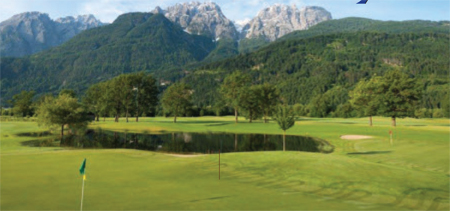Does the Course Fit Your Eye?
 Professional golfers often say a course either does or doesn’t “fit their eye.” What are they talking about?
Professional golfers often say a course either does or doesn’t “fit their eye.” What are they talking about?
A course that fits your eye means different things to different players. A fader like Jack Nicklaus loved holes that doglegged to the right, and he also liked greens that angled diagonally from front left to back right. A low-ball hitter like Lee Trevino didn’t like obstacles in front of the green, or greens that were elevated.
Players who hit the ball very straight off the tee probably enjoy tight, tree-lined fairways, while those who spray the ball probably thrive best on open, links-style layouts. Boo Weekley comes to mind as someone who likes tree-lined courses. The course on which he grew up, Tanglewood Country Club in Milton, Florida, was very tight and had trees everywhere. It’s no coincidence that his three tour victories came at Harbour Town and Colonial Country Club – courses reminiscent of where he learned the game. It also helps that Weekley is one of the best drivers in the game, and undoubtedly playing at Tanglewood helped him hone that skill.
TPC Sawgrass is a course that many players say does not fit their eye. In fact, so many players say it that there has to be an explanation. It doesn’t necessarily show up on television, but if you’ve ever played there, you know that each hole gives you a different look. Most courses seem to have holes of a similar nature, but not here. As a result, most players find more than a few holes that don’t fit their eye. It’s also been said of TPC Sawgrass that it doesn’t favor one style of play over the other, and this is probably a large reason why.
If we must play a course or a hole that doesn’t fit our eye, how can we best play it? First, accept that ifit doesn’t fit your eye, it simply doesn’t. For example, if you play a draw and are hitting to a fairway which diagonals to the right, you might feel you are destined to hit it into the left-hand rough. Instead of trying to hit a fade, it might be prudent to take out a shorter club off the tee and imagine the landing area as the green. Another hole might be a slight dogleg left with water on the left, a situation that can make the right-handed drawer of the ball somewhat nervous. Here, we can pick the right-hand fairway cut-line and pretend that that’s the middle of the fairway.
On holes or situations that don’t fit our eye, we can also take a few extra seconds, slow down and visualize, and try to find a comfortable shot. Doing this often does wonders to calm our negative thinking in these situations. It’s also important to have a positive attitude. Dreading playing a course or a hole we dislike or that may not fit our eye is almost a guarantee of failure.
On the other hand, playing a course that does fit our eye can have its own pitfalls, as we may become complacent. We all know that golf, while a fun game, is also a hard game in the sense that if we let our guard down, it becomes difficult to play our best.
Golf courses that don’t fit our eye don’t have to be torture. Accepting the challenge and embracing it will give us maximum opportunity to enjoy the day.




